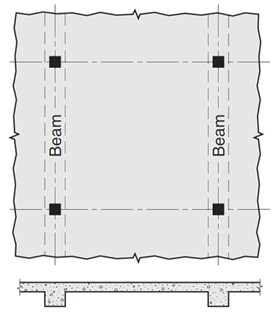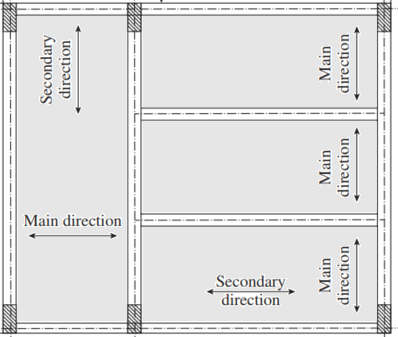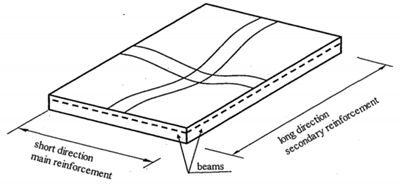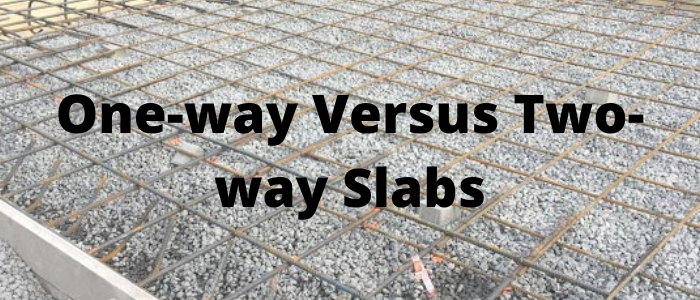Concrete slabs are widely used structural element in building construction. Slabs make flat horizontal surfaces such as floors, pavements and bridge decks. The thickness of a reinforcement concrete slab usually falls in the range of 10 to 50 cm, however this thickness is very small compared to the plan dimensions of a slab. Slabs are typically supported by beams, columns, walls, or the ground, depending on the type of slab applied. Slabs can be either premade in a precast concrete plant and then assembled into place on site, for cast in-situ using formworks. In this article, we are going to look at the differences between one-way and two-way slabs.
One-way Slabs
A one-way slab transfers the loads exist on its surface in just one direction. In such case, slabs are supported on two opposite sides only. The slab loads transfers in the direction perpendicular to the supporting beams. In this slab, the main reinforcement bars are provided perpendicular to the supporting beams.

If a rectangular slab is supported on all four sides, but the long side is two or more times as long as the short side, the slab will, for all practical purposes, act as a one-way slab, with bending primarily occurring in the short direction. Such slabs are designed as one-way slabs. In other words, for slab surrounded by four beams, the ratio of the longer span/the shorter span >= 2 in order for designing this slab as one-way. Here, the main RFT bars are placed on the shorter side while the distribution bars are placed on the longer side.

Two-way Slabs
For a slab to be classified as a two-way slab, the beam should be supported on four beams and the length of the long side should be less than twice the length of the short side. In two-way slabs, the load is transferred in both directions. The short direction is considered the main direction since the majority of the load supported by slab is transferred in the direction. Also, the main reinforcement is arranged along the short direction. The longer the direction is called the secondary direction and secondary reinforcement is arranged in that direction.

Read Also: Five Types of External Supports
